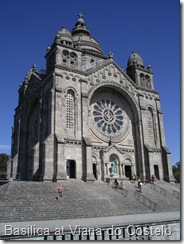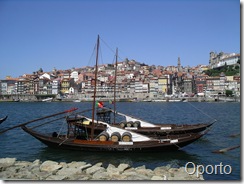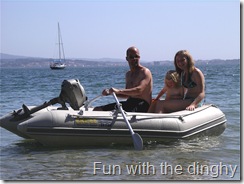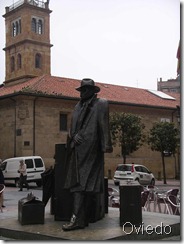 We left Funchal on the 29 October and, apart from 12 hours motoring when there was little wind, had a good sail to the Canaries. We arrived at Isla Graciosa – a tiny island just off the northern point of Lanzarote - on on the 31st and had intended going into the small marina at Caleta del Sabo, but there was a very strong cross wind and little room to manoeuvre so we thought better of it and anchored off for the night.
We left Funchal on the 29 October and, apart from 12 hours motoring when there was little wind, had a good sail to the Canaries. We arrived at Isla Graciosa – a tiny island just off the northern point of Lanzarote - on on the 31st and had intended going into the small marina at Caleta del Sabo, but there was a very strong cross wind and little room to manoeuvre so we thought better of it and anchored off for the night. The next morning the wind had abated a little so we moved into the marina and moored in difficult conditions, but were most thankful for the assistance from other cruisers already in there. That morning we were told about a (not unexpected) death in the family and decided this was a good place to leave the boat whilst we returned to England a week later for the funeral.
The island is very barren and Caleta del Sabo is a very pretty place with low-rise buildings, mainly white with the details picked out in bright colours. From the marina to get to the main part of the village we walked along the beach when the tide was out, but the streets are also sandy, the only paving being around the waterfront where the ferries dock. There are 3 mini supermarkets, a small butcher, a baker, a pharmacy, a surprising good hardware store, and a few restaurants and bars. Very quiet, very relaxed and completely charming.
By contrast, when we arrived in England it was cold, grey, wet and miserable, and midway through the week Anne developed what we thought was a bad cold. On our return to Isla Graciosa she went to bed for the next few days – turned out to be a bad dose of Bronchitis. It was a couple of weeks before she was well enough to sail.
We eventually sailed on the 27th November, but once clear of the channel between Graciosa and Lanzarote the wind died and we had to motor the rest of the way to Las Palmas on Gran Canaria.
We anchored for a couple of nights before going into the marina as we wanted to have our rigging replaced before the long trip across the Atlantic.
We enjoyed being in the marina at Las Palmas – there are lots of cruisers, some long-term residents and others, like us, just passing through. It’s very friendly, sociable and everyone helps each other when needed. Las Palmas is a busy, commercial city with lots going on in the time we were there.
Jim’s sister, Margaret, came out to stay with us for 10 days in December. It was great fun having her around and we took the opportunity to visit the Vegueta area (old town) of Las Palmas around the Cathedral and the Triana area with its Art Nouveau buildings and very large Christmas crib arranged as a circle around a tree, and stayed to see the lovely Christmas lights in the evening. We also enjoyed an excellent folk singing/dancing display, click here for video, had a day out by bus visiting an attractive village in the north-west part of the island, and Anne and Margaret had some fun shopping trips together.
At Christmas the cruisers organised a gathering for the evening - bring-a-dish to share and your own BBQ meat and drink. About 50 people turned up of all nationalities – it was a really nice Christmas. At New Year’s Eve our pontoon had a bring-a-dish pontoon party, we provided the music with our Ipod and mini speakers, and people wandered in and out – again, great fun.
For more photos please click here







